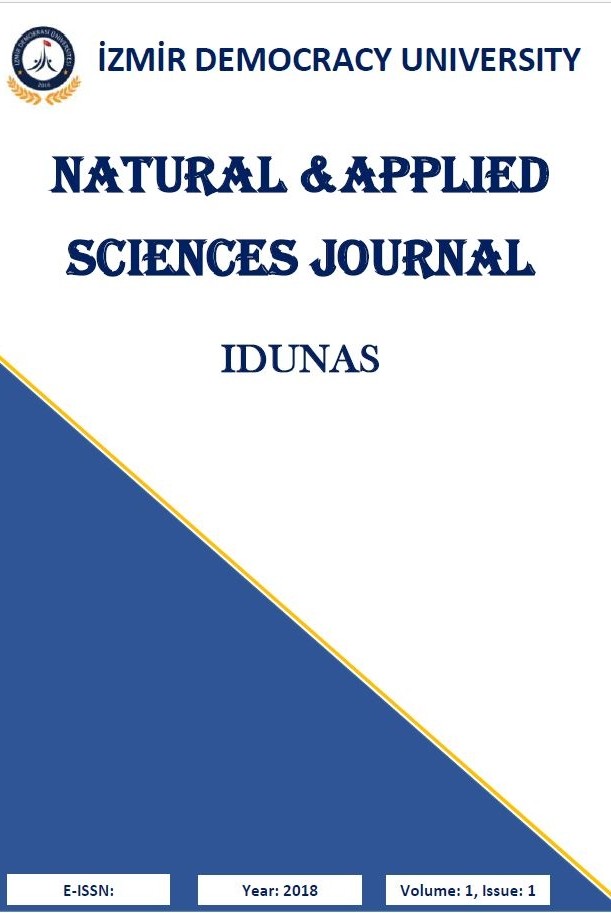Characterization of Coarse Recycled Aggregates Produced from Concretes with Different Strength Levels
Characterization of Coarse Recycled Aggregates Produced from Concretes with Different Strength Levels
recycled concrete aggregate parent concrete strength level, water absorption, degradation resistance, flakiness index,
___
- Asmatulu, R., & Asmatulu, E. (2011). Importance of recycling education: a curriculum development at WSU. Journal of Material Cycles and Waste Management, 13(2), 131.
- Batman, M. (2018). Investigation of the usability of concrete test sample wastes as recycling aggregate. (Master Thesis, Atatürk University).
- Debieb, F. Courard, L. Kenai, S. Degeimbre, R. (2010). Mechanical and durability properties of concrete using contaminated RAs. Cement and Concrete Composites, Vol. 32 (6), pp.421–426.
- Demirel, C., Toklu, K., & Şimşek, O. (2015). Usability of recycling aggregate in concrete production and evaluation in terms of sustainability, 2nd International Sustainable Buildings Symposium.
- Etxeberria, M. Vazquez, E. Mari, A. Barra, M. (2007). Influence of amount of recycled coarse aggregates and production process on properties of RAC. Cement and Concrete Research, Vol. 37 (5), pp.735–742.
- Fonseca, N. De Brito, J. Evangelista, L. (2011). The influence of curing conditions on the mechanical performance of concrete made with recycled concrete waste. Cement and Concrete Composites, Vol. 33 (6), pp. 637–643.
- Huda, S.B. Shahria Alam, M. (2015). Mechanical and freeze-thaw durability properties of RAC made with recycled coarse aggregate. Journal of Materials in Civil Engineering, Vol. 27 (10): 04015003.
- Malešev, M., Radonjanin, V., & Broćeta, G. (2014). Properties of recycled aggregate concrete. Contemporary Materials, 5(2), 239-249.
- Mehta, P. K. (2001). Reducing the environmental impact of concrete. Concrete international, 23(10), 61-66.
- Mehta, P. K. (2002). Greening of the concrete industry for sustainable development. Concrete international, 24(7), 23-28.
- Mohammed, N., Sarsam, K., & Hussien, M. (2018). The influence of recycled concrete aggregate on the properties of concrete. In MATEC Web of Conferences (Vol. 162, p. 02020). EDP Sciences.
- Movassaghi, R. (2006). Durability of reinforced concrete incorporating recycled concrete as aggregate (RCA) (Master's thesis, University of Waterloo).
- Nagataki, S., Gokce, A., Saeki, T., “Effects of Recycled Aggregate Characteristics on Performance Parameters of Recycled Aggregate Concrete”, Proceedings of 5th CANMET/ACI International Conference on Durability of Concrete, Barcelona, June 2012, pp. 51-71.
- Naik, T. R., & Moriconi, G. (2005, October). Environmental-friendly durable concrete made with recycled materials for sustainable concrete construction. In International Symposium on Sustainable Development of Cement, Concrete and Concrete Structures, Toronto, Ontario, October (pp. 5-7).
- Öztürk, M. (2005). Effects of air pollution on health in urban areas. Ministry of Environment and Forestry, Ankara / Turkey.
- Pacheco-Torgal, F. (2013). Introduction to the recycling of construction and demolition waste (CDW). In Handbook of recycled concrete and demolition waste (pp. 1-6). Woodhead Publishing.
- Padmini, A. K., Ramamurthy, K., & Mathews, M. S. (2009). Influence of parent concrete on the properties of recycled aggregate concrete. Construction and Building Materials, 23(2), 829-836.
- Sivakumar, V., McKinley, J. D., & Ferguson, D. (2004). Reuse of construction waste: performance under repeated loading. Proceedings of the Institution of Civil Engineers-Geotechnical Engineering, 157(2), 91-96.
- Tam, V. W., Soomro, M., & Evangelista, A. C. J. (2018). A review of recycled aggregate in concrete applications (2000–2017). Construction and Building Materials, 172, 272-292.
- TS EN 1097-2 (2020), Tests for mechanical and physical properties of aggregates - Part 2:Methods for the determination of resistance to fragmentation. Turkish Standard Institute.
- TS EN 1097-3 (1999), Tests for mechanical and physical properties of aggregates- Part 3: Determination of loose bulk density and voids. Turkish Standard Institute.
- TS EN 1097-6 (2013), Tests for mechanical and physical properties of aggregates - Part 6: Determination of particle density and water absorption. Turkish Standard Institute.
- TS EN 12390-3 (2019), Testing hardened concrete - Part 3: Compressive strength of test specimens. Turkish Standard Institute.
- TS EN 933-1:2012(EN) (2012), Tests for geometrical properties of aggregates - Part 1: Determination of particle size distribution - Sieving method. Turkish Standard Institute.
- TS EN 933-3 (2012), Tests for geometrical properties of aggregates - Part 3: Determination of particle shape - Flakiness index. Turkish Standard Institute.
- Verian, K. P., Ashraf, W., & Cao, Y. (2018). Properties of recycled concrete aggregate and their influence in new concrete production. Resources, Conservation and Recycling, 133, 30-49.
- Volz, J.S., Khayat, K.H., Arezoumandi, M., Drury, J., Sadati, S., Smith, A. and Steele, A., (2014). Recycled Concrete Aggregate (RCA) for Infrastructure Elements, Final Report Prepared for Missouri Department of Transportation.
- ISSN: 2645-9000
- Başlangıç: 2018
- Yayıncı: İzmir Demokrasi Üniversitesi
A VIKOR-BASED APPROACH FOR DETERGENT SELECTION PROBLEM FROM SUSTAINABILITY PERSPECTIVE
Bengü GÜNGÖR, Ali Serdar TAŞAN
Aybike GÜLGÖR, Zehra KARA, Melis AŞIK, Yüksel ÖVÜN, İlvenur UZUNER, Rümeysa ŞENER, Pınar YILGÖR HURİ
Hojjat HOSSEİNNEZHAD, Erdoğan TOSUN, Özge ÇAKIR, Kambiz RAMYAR
Removal of Radioactive Gas by Zeolite Filter From Nuclear Power Plants
PREDICTING KIDNEY TUMOR SUBTYPE FROM CT IMAGES USING RADIOMICS AND CLINICAL FEATURES
